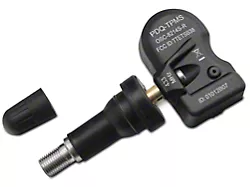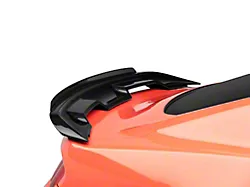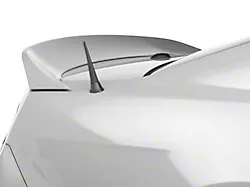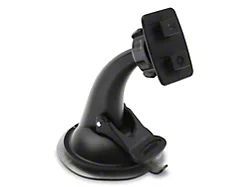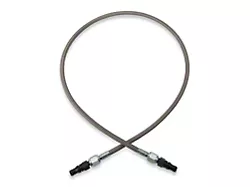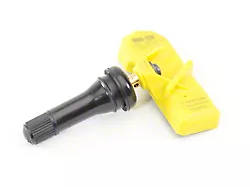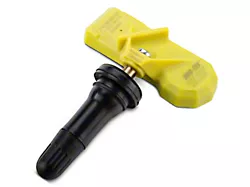
Best Sellers
How to Install Richmond 8.8 in. 3.55 Gears on your Mustang
1. Remove the old gear set and thoroughly clean both the ring gear carrier and rear end housing with solvent. After cleaning, air dry all parts and inspect all components for damage.
2. Verify you have purchased the correct gear ratio. This can be checked by dividing ring gear tooth count by the pinion tooth count. e.g. RING GEAR TOOTH COUNT – 35T PINION GEAR TOOTH COUNT – 10T 35 ÷ 10 = 3.50:1
3. Many differential cases have many thousands of miles of service. Check all threads in the case for wear. It may be necessary to chase the threads with an engineering tap to clean and align the threads. When changing case bolts, check to make sure they are not too long and bottom out in the ring gear.
4. Check side bearing adjusters as they are often warped and out of shape, making ring and pinion settings difficult. Replace as necessary.
5. Check the backside face of the ring gear for flatness. Generally, after heat treating there may be a degree of taper. This may be rectified by lapping gear with sand paper on a glass flat plate. This will give you a more even and uniform pattern when setting up your new gear set.
6. Careful attention should be given to blueprinting your differential. Accurate clearance will lead to a longer life for your unit. The same care and detail as used in engine assembly should be exercised.
7. All new parts should be thoroughly cleaned before assembly and checked for damage. Pinion bearings should never be removed from the old pinion and refitted to the new pinion as this may void any warranties. Always install new bearings.
8. Examine the ring gear mounting surface for nicks or burrs which might prevent a flush mounting of the newly installed ring gear. Ring/ Pinion tooth depth variations can result from a ring gear that is “cocked” on its mounting surface. If a ring gear spacer is to be used, also check it for surface imperfections. Nicks or burrs can be removed by using block-backed grit paper or a small file. Following material removal, rewash in solvent and air dry. Mount ring gear. Loctite® ring gear bolts and torque to factory specifications.
9. All ring gears and pinions have been “LAPPED” in sets and should never be mixed with another ring gear or pinion. Check to see that serial numbers are the same on the ring gear and pinion
10. Each ring and pinion is pre-run and marked on the pinion face with its proper depth setting called the “Checking Distance”. This dimension is from the face of the pinion to the axle center-line. A setting tool must be used to measure the checking distance. Pinion depth is adjusted by adding or subtracting shim distance. Stay /- .002” of the pinion dimension (see Illustrations ‘A’ and ‘B’).
11. Once pinion depth is achieved using a new crush collar or preload shim pack (Dana®), set pinion bearing preload to 15 inch-pounds rotating torque with used bearings, and 25 inch-pounds with new bearings. Once preload is set, install the seal and Loctite® pinion nut.
12. Once the pinion gear is installed, position ring gear and carrier into housing to check backlash. Each ring gear and pinion is developed to run at .007” to .009” backlash for street gear sets.
13. Adjustments for backlash are done by spanner rings in the housing or shim packs behind the carrier bearing cups (GM® or Dana®). Always be sure carrier bearings are pre-loaded. The carrier should not fall out of the housing, but should have to be “tapped” in during final installation. Replace bearing caps and torque to factory specifications.
14. You are now ready to verify the tooth contact pattern. A gear marking compound should be used. Paint gear teeth with compound in several spots and rotate ring gear several revolutions. A tooth contact pattern will appear and should be similar to the pattern shown in Illustration ‘C’. If the pattern is not in the approximate position shown, reset pinion depth and backlash to correct pattern. Pinion shims usually must be moved in .003” increments to notice a pattern change. If a pattern is heavy toe, subtract shims (see Illustration ‘D’). If a pattern is heavy heel, add shims (see Illustration ‘E’). NOTE: REVERSE THIS PROCEDURE FOR 8” AND 9” FORD®.
15. Fill the case with the required amount of FRESH 80W-90 gear lube. (DO NOT USE “USED” gear lube – no matter how low the mileage and time on the oil). Maintain the proper level after the road test as this may change fluid level. Add as necessary. Proper maintenance is a must to ensure your safety, as well as protect the working life of your gear set.
16. Make sure oil vent is not blocked in rear end housing. SPECIAL NOTE: IN EXTREME CONDITIONS WE STRONGLY RECOMMEND A NEW DIFFERENTIAL COVER THAT HAS AN EXTENDED OIL CAPACITY FOR NON-REMOVEABLE CARRIER-TYPE REAR ENDS.



